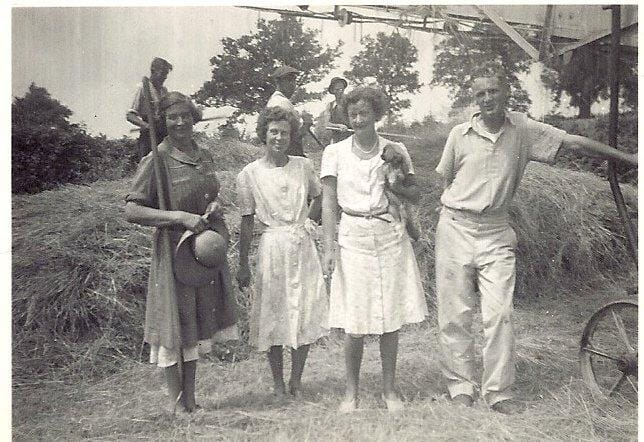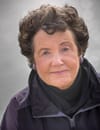Milking a Recovery

Dorothy Crowther-Smith (far L) and Gervas Hughes (far R) baling hay at her farm in Bordon, Hampshire during his recovery from polio. (N.B. Gervas’ withered R arm and shoulder)
Milking a Recovery
After a month at the two-bed G&P Mine dispensery in Que Que under the care of Dr. Davey, Gervas Hughes could walk a little. With the diagnosis of polio from Dr. Godfrey Huggins confirmed in Salisbury, he wired his father Charles in England.
Milking a Recovery
Charles came out to Que Que again (in his lifetime Charles would make sixteen trips to visit his three sons in Rhodesia). He sold everything, other than the farm and the industrial site Gervas had acquired. For the second time he took him back to England. Gervas was under instruction to lie in bed and rest to recover, which was the standard treatment of the 1920’s. He was wasting away. He did not want to live.
But while recuperating, he spent a lot of time with Dorothy Crowther-Smith, the daughter of a local doctor. She was an independent woman with her own farm and herd of Jersey dairy cows. She supplied fresh milk to the Hughes family daily. She had modern ideas and persuaded him to exercise. He responded. Soon she had him driving a car and riding a horse again.
But his shoulder muscles never recovered which meant that he could not lift his arms above waist height. He could still reach his head with his right hand, by pushing upwards with his left, under his right elbow. To drive a car, he would swing his hands onto the steering wheel and use his fingers to position his hands on each side of the steering wheel. If the car was being driven slowly and the steering wheel was hard to turn, a passenger would be asked to help.
After eighteen months he was headed back to Que Que for the third time in seven years, alone. What he did not realize, of course, was that Dorothy was very much in love with him.
Many Thanks to Tim Hughes of Queensland, Australia for the story excerpt from his unpublished manuscript Matambega and Son and for the photograph.
P.S. Tim writes since I posted this blog: In the photo they were making a “Hay stack”. It is poetic licence for you to say “baling hay” but hay baling was only invented in 1937. Gervas had an early stationary baler in the late 1940’s driven by a belt from a tractor belt pulley and the rectangular bales were hand tied together with wire.
A hay stack was usually built in the open and made water proof as it was constructed needing considerable skill and sometimes thatched to keep rain out. The men in the background of the snap were building the hay stack. When needed slices of hay would be cut off with a large “hay/silage knife”. (like a large toothed saw).
